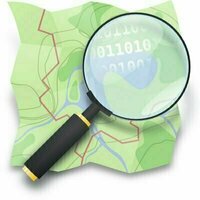Need advice about which tool to choose?Ask the StackShare community!
Google Maps vs Leaflet vs OpenLayers: What are the differences?
Introduction:
Google Maps, Leaflet, and OpenLayers are JavaScript libraries that provide interactive map functionality for websites. While they all offer similar features, there are key differences between them that can impact your choice of which library to use.
Pricing and Licensing: One of the main differences between Google Maps and Leaflet/OpenLayers is the pricing and licensing model. Google Maps has a pricing structure based on usage, with free and premium tiers available. In contrast, Leaflet and OpenLayers are open-source libraries that are free to use and do not have any associated licensing costs.
Map Data Sources: Another difference lies in the map data sources that each library utilizes. Google Maps primarily uses its own proprietary data, which is regularly updated and comprehensive. On the other hand, Leaflet and OpenLayers allow you to use a variety of map providers, including OpenStreetMap and third-party providers. This offers more flexibility and customization options, especially if you have specific data requirements.
Customization and Styling: While Google Maps provides various customization options, Leaflet and OpenLayers offer more extensive control over the appearance and styling of maps. Both libraries allow you to easily customize markers, layers, and overlays, as well as apply different tile layers and base maps. This flexibility can be beneficial if you have specific branding or design requirements for your maps.
API and Documentation: The APIs and documentation for Google Maps and Leaflet/OpenLayers differ in terms of ease of use and learning curve. Google Maps has a well-documented API with extensive resources and clear examples, making it relatively easy to get started. Leaflet and OpenLayers also provide comprehensive documentation, but they may require a slightly steeper learning curve, especially for beginners with minimal experience in web mapping.
Integration and Compatibility: Google Maps has native integration with other Google services, such as Google Places and Street View, which can be useful if you want to leverage these additional features. On the other hand, Leaflet and OpenLayers are more flexible in terms of integration with various third-party libraries, frameworks, and plugins. This allows for more customization and integration possibilities, depending on your specific needs.
Performance and Loading Speed: The performance and loading speed of maps rendered using these libraries can also vary. Google Maps has a built-in caching mechanism and data loading optimizations, which can result in faster loading times. Leaflet and OpenLayers, being open-source libraries, may require some additional optimization efforts to achieve similar performance levels, especially when dealing with large and complex datasets.
In Summary, while Google Maps offers a user-friendly interface and extensive built-in features, Leaflet and OpenLayers provide greater flexibility, customization options, and compatibility with various map providers and libraries. The choice between these libraries depends on factors such as pricing, data sources, customization needs, integration requirements, ease of use, and performance considerations.
I would like to input a spreadsheet with names and associated addresses into a map program to; pinpoint all of the locations on a map. How can I do that? On which map? Are there field size limitations? All help would be appreciated.
There is a subdivision that is about one(1) mile by 3/4 mile in size. Is there a map program that would create the most efficient way to drive all of the streets in the subdivision without a lot of doubling back?
You could use a low-code platform to read the spreadsheet and use them as input for the pin pointing. The most expert provider would HERE or TomTom for the best routing algoritmes. Input parameters would be dependent on the chosen provider.
I see your stack is mostly Google and I am not familiar with that. But we have implemented this through the M365 Teams/SharePoint, Excell, MS PowerPlatform, our WMS and Azure.
From a StackShare Community member: "We're a team of two starting to write a mobile app. The app will heavily rely on maps and this is where my partner and I are not seeing eye-to-eye. I would like to go with an open source solution like OpenStreetMap that is used by Apple & Foursquare. He would like to go with Google Maps since more apps use it and has better support (according to him). Mapbox is also an option but I don’t know much about it."
I use Mapbox because We need 3D maps and navigation, it has a great plugin for React and React Native which we use. Also the Mapbox Geocoder is great.
Google Maps is best because it is practically free (they give you $300 in free credits per month and it's really hard to go over the free tier unless you really mean business) and it's the best!
I use OpenStreetMap because that has a strong community. It takes some time to catch up with Google Maps, but OpenStreetMap will become great solution.
I use Google Maps because it has a lot of great features such as Google's rich APIs, geolocation functions, navigation search feature, street map view, auto-generated 3D city map.
I use OpenStreetMap because i have the control of the environment, using Docker containers or bare-metal servers.
Pros of Google Maps
- Free253
- Address input through maps api136
- Sharable Directions81
- Google Earth47
- Unique46
- Custom maps designing3
Pros of Leaflet
- Light weight32
- Free28
- Evolutive via plugins12
- OpenStreetMap10
- Strong community9
- Choice of map providers7
- Easy API6
- Alternative to Google Maps3
Pros of OpenLayers
- Flexibility15
- Maturity11
- Open Source8
- Incredibly comprehensive, excellent support7
- Extensible4
- Strong community4
- Choice of map providers4
- Low Level API3
- OpenStreetMap1
Sign up to add or upvote prosMake informed product decisions
Cons of Google Maps
- Google Attributions and logo4
- Only map allowed alongside google place autocomplete1









































